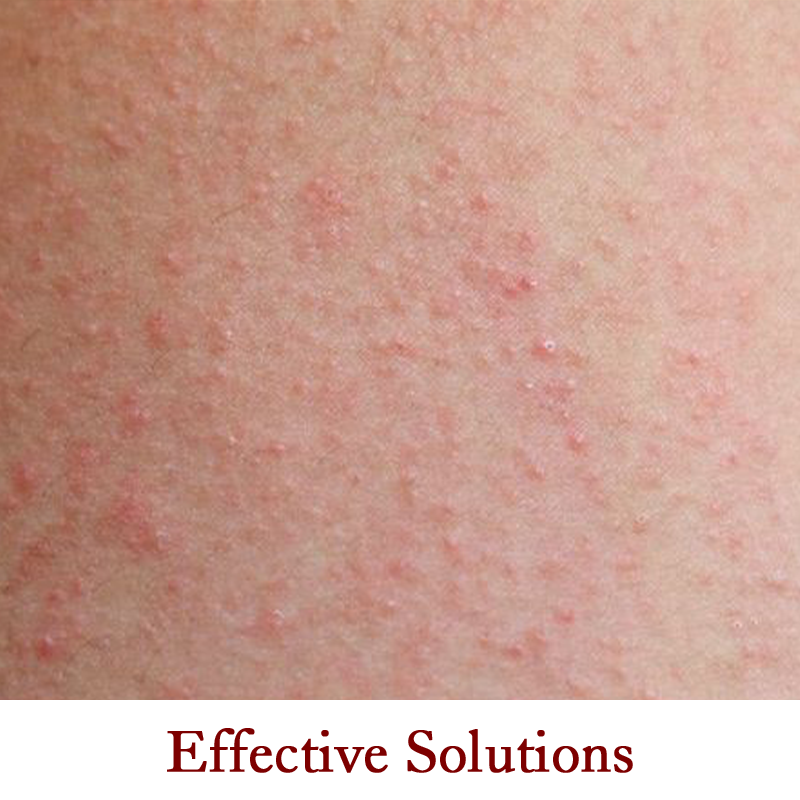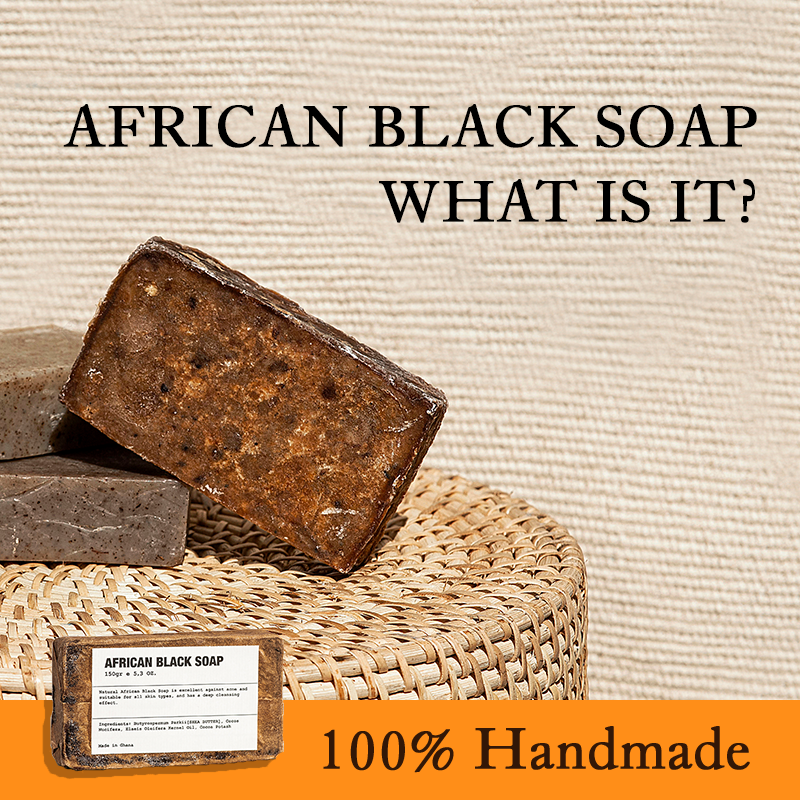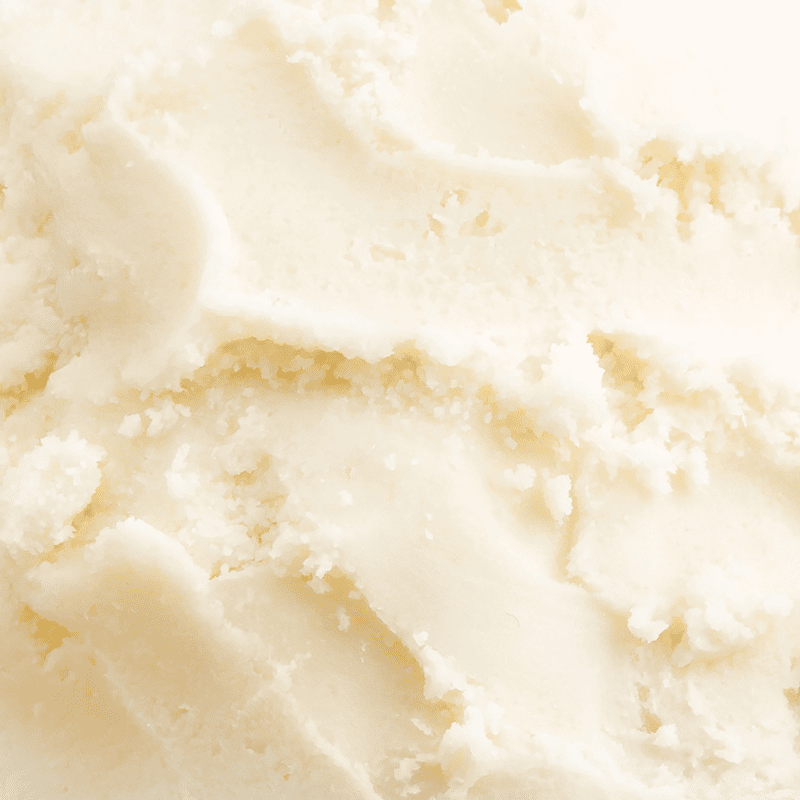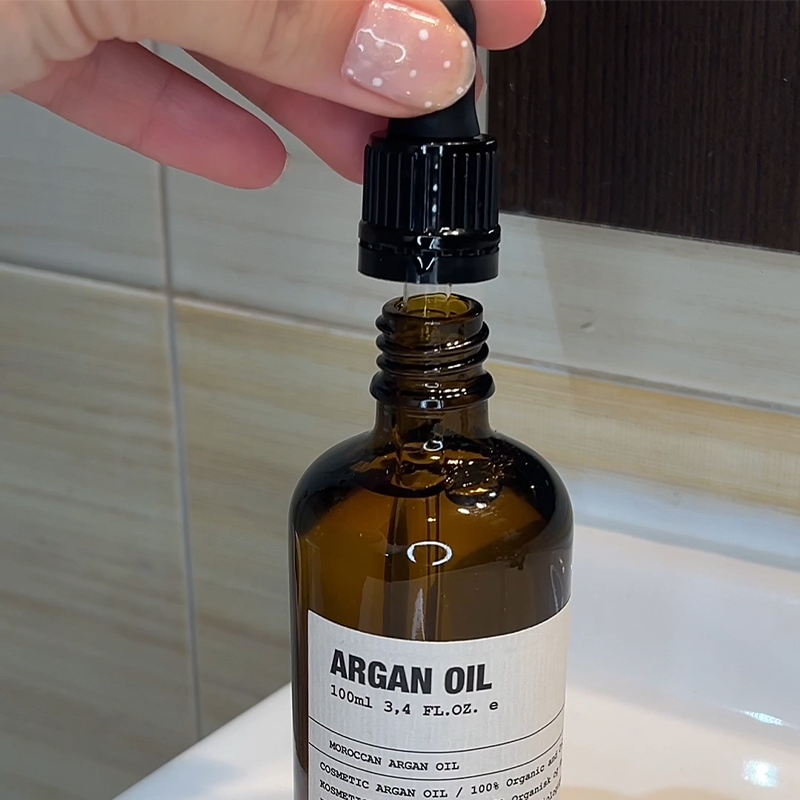Where does argan oil come from, and how is it made?
Argan oil, a popular beauty oil, is valued for its numerous benefits for the skin and hair. But where does argan oil actually come from, and how is it made? Argan oil is extracted from the fruits of the argan tree, which mainly grows in Morocco. The argan tree is a rare species found only in certain parts of Morocco. The fruits of the argan tree contain small seeds from which the precious oil is pressed. The traditional process of making argan oil is time-consuming and labor-intensive. Women in Morocco are often involved in the production process, hand-harvesting the seeds, drying them, and then hand-grinding and pressing them. This ensures a pure and high-quality oil. Today, commercial argan oil is also produced on an industrial scale. The extraction process has been optimized to maintain the best quality. Whether produced through traditional methods or modern processes, argan oil remains a valuable and beloved product for many people worldwide.
The origin of argan oil
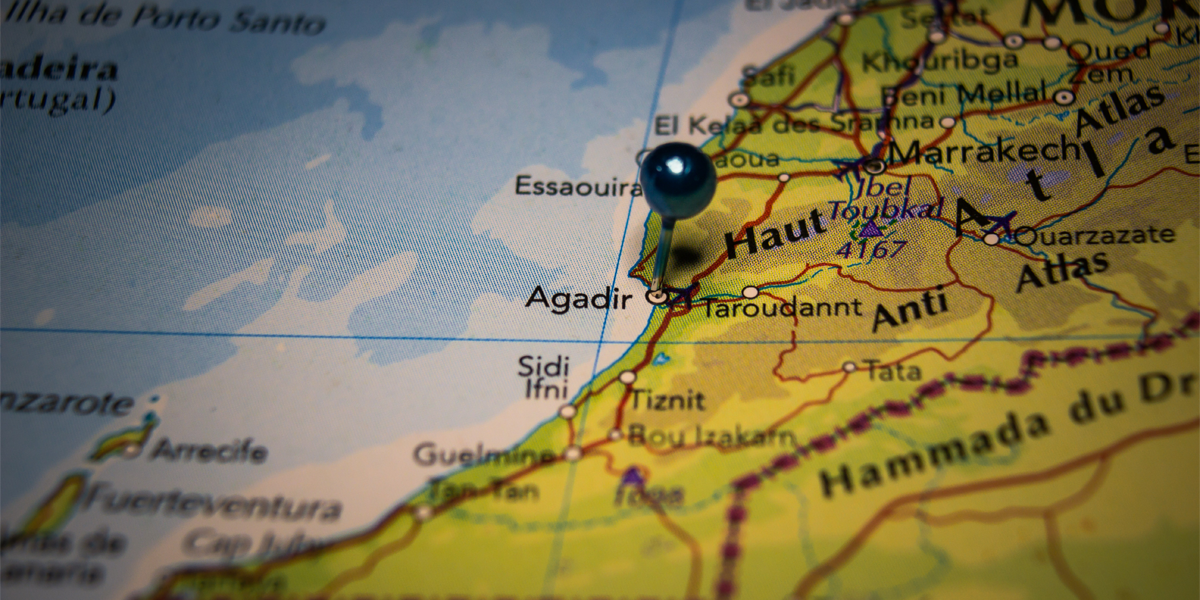
Argan oil originates from Morocco, where it has been used for centuries for beauty and health purposes. The argan tree, also known as the "tree of life," thrives in the dry and arid areas of Morocco, especially in the regions of the Atlas Mountains. This tree is crucial for local communities as it not only produces argan oil but also provides food and shelter for animals. It takes about 15 years for the argan tree to mature enough to produce fruits, contributing to the rarity and value of argan oil.
The argan tree and its cultivation
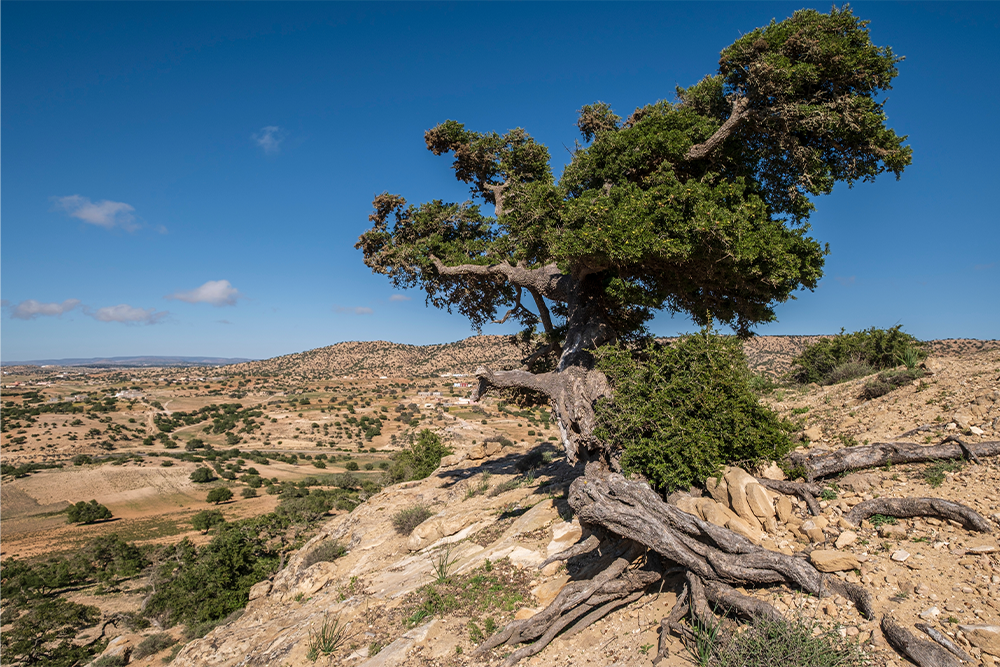 The argan tree (Argania spinosa) is a unique tree species that mainly grows in Morocco. This tree can reach a height of 8-10 meters and has a long lifespan of up to 150-200 years. What makes the argan tree truly remarkable is its ability to survive in dry and harsh conditions where other trees cannot thrive. The roots of the argan tree are deep and robust, allowing the tree to absorb water from deeper soil layers. This enables the tree to survive during the droughts that frequently occur in Morocco.
The argan tree (Argania spinosa) is a unique tree species that mainly grows in Morocco. This tree can reach a height of 8-10 meters and has a long lifespan of up to 150-200 years. What makes the argan tree truly remarkable is its ability to survive in dry and harsh conditions where other trees cannot thrive. The roots of the argan tree are deep and robust, allowing the tree to absorb water from deeper soil layers. This enables the tree to survive during the droughts that frequently occur in Morocco.
Cultivating argan trees requires patience and dedication. It takes about 15 years for an argan tree to mature enough to produce fruits. Therefore, argan trees are a precious asset for local communities in Morocco. The conservation and protection of argan trees are crucial to ensure the sustainability of argan oil production.
Traditional methods of extracting argan oil
The traditional method of extracting argan oil has been in use for centuries in Morocco. Women in the communities around the argan orchards are often responsible for this labor-intensive process. It starts with gathering the fruits of the argan tree, which resemble large olives. Subsequently, the fruits are sun-dried to allow the pulp to wither. After drying, the fruits are manually opened to expose the seeds.
The seeds contain the precious argan oil and are hand-ground in a stone mill. The resulting mixture is then hand-kneaded to release the oil. The liberated oil is then pressed and filtered to obtain pure argan oil. This traditional process is time-consuming and requires a lot of manual labor, but it ensures a high-quality oil while preserving the natural properties of argan.
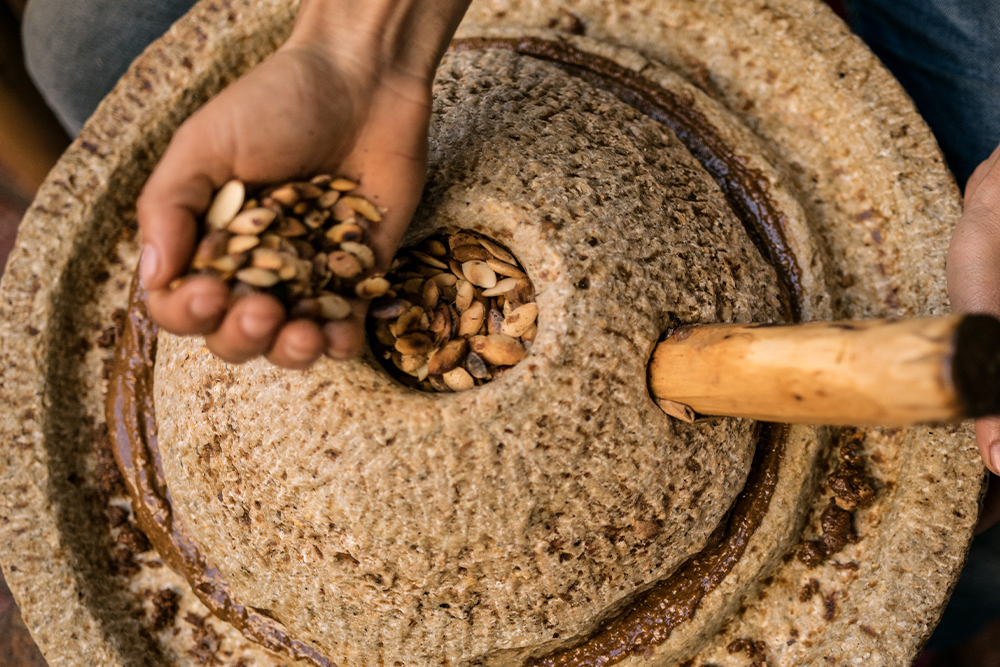
Modern methods of extracting argan oil
In addition to traditional methods, argan oil is nowadays also produced on an industrial scale. Modern methods involve the use of mechanical presses and more efficient extraction processes to obtain the oil. The fruits are mechanically opened, and the seeds are then mechanically pressed to release the oil. This process is less time-consuming and requires less manual labor than traditional methods.
In modern argan oil production, cold pressing is often employed, meaning that the seeds and the oil are kept at a low temperature during pressing to maintain the best quality. This ensures that the essential nutrients and antioxidants in the oil are preserved. Modern production methods also allow producers to filter and purify argan oil, resulting in an even purer and clearer oil.
The benefits and applications of argan oil
Argan oil is known for its numerous benefits for the skin, hair, and overall health. This natural oil is packed with vitamins, antioxidants, and essential fatty acids that nourish, moisturize, and protect the skin. Argan oil can help reduce fine lines and wrinkles, alleviate skin irritations, and promote a healthy glow.
In addition to its use on the skin, argan oil is also a popular choice for hair care. It can assist in repairing damaged hair, reducing frizz, and enhancing overall hair health. Argan oil can also be used as a natural and nourishing ingredient in homemade beauty products, such as face masks, scrubs, and hair masks.
Sustainability and Fair Trade Practices in the Argan Oil Industry
The argan oil industry plays a crucial role in Morocco's economy and provides employment to many women in the region. Preserving the argan trees and ensuring the sustainability of argan oil production are essential to ensure that this valuable natural resource is preserved for future generations.
Many argan oil producers in Morocco have committed to sustainability practices and fair trade. They collaborate with local communities to ensure that the production of argan oil is done in an environmentally friendly and socially responsible manner. This includes the conservation of argan trees, supporting local communities, and ensuring fair wages and working conditions for the women involved in the production.

How to Incorporate Argan Oil into Your Skincare Routine
If you want to incorporate argan oil into your skincare routine, there are several ways to do so. Argan oil can be applied directly to the skin as a moisturizer or serum. It can also be mixed with other oils or ingredients to create your own DIY skincare products. Additionally, there are many skincare products available on the market that contain argan oil, such as creams, lotions, and serums.
When using argan oil, it's important to remember that a little goes a long way. A few drops of argan oil are sufficient to reap the desired benefits. Gently massage the oil into the skin until fully absorbed. Argan oil can be used both in the morning and evening as part of your daily skincare routine.
The Significance of Argan Oil in Beauty and Well-being
Argan oil, derived from the fruits of the rare argan tree in specific parts of Morocco, is a prized product due to its numerous benefits for the skin, hair, and overall health. Although traditional production methods are time-consuming, they result in a pure and high-quality oil. However, modern industrial processes have led to large-scale production without compromising quality.
It is essential to seek argan oil that meets sustainability and fair trade certification standards to ensure quality and authenticity. Incorporating argan oil into your daily skincare routine provides the opportunity to reap the diverse benefits this natural oil has to offer.
For an authentic experience, we recommend SAFWAH® argan oil, which adheres to high-quality standards and ethical practices. Transform your beauty and well-being routine with our pure argan oil and discover the impact of this valuable natural treasure. Order now 🛒 and experience the goodness of SAFWAH® Argan Oil for your skin and hair! 💫
